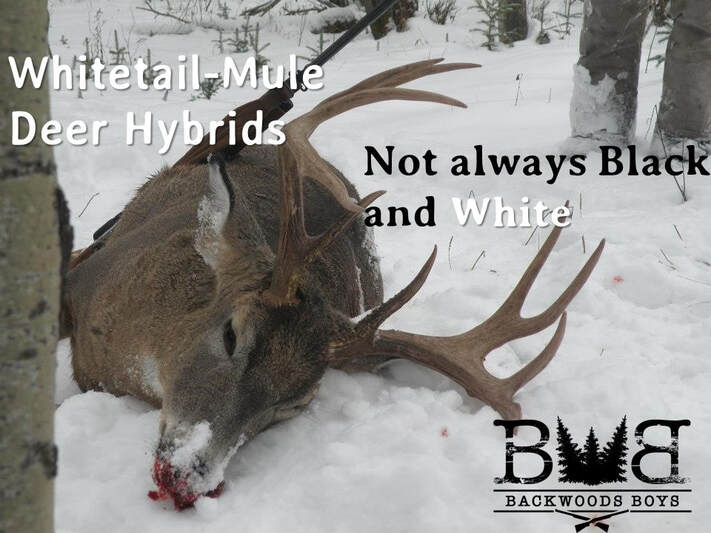
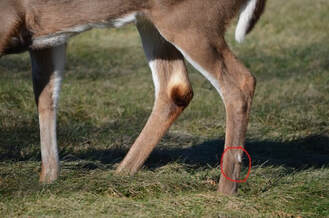 Whitetail metatarsal gland (circled). Photo Credit: QDMA
Whitetail metatarsal gland (circled). Photo Credit: QDMA
- The most commonly used (and most reliable) identifier to differentiate between whitetails, mule deer, and their hybrids is the length of the metatarsal gland. The metatarsal gland is a linear gland located on the outside of the back leg, below the knee. In mule deer, this gland is generally at least 70mm long (2.76”) while on whitetails, it is normally less than 42 mm (1.65”), and on hybrids is intermediate (52 mm or 2.05” in one study) (Derr et al, 1991).
- In most hybrids, the metatarsal tuft is white like that of whitetails, as opposed to the tan of colour of mule deer (Kay and Boe, 1992).
So, you know the saying "don't shoot until you can see the white of their eyes?" Well, if you don't want to risk getting charged with poaching, don't shoot until you can see the white of the metatarsal gland! All other physical identifiers can be misleading.
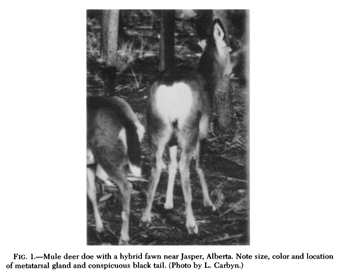 Hybrid fawn with tail and metatarsal characteristic of hybridization. Photo Credit: Wishart, 1980 and L. Carbyn.
Hybrid fawn with tail and metatarsal characteristic of hybridization. Photo Credit: Wishart, 1980 and L. Carbyn.
- Kae and Boe (1992) describes hybrid tails as "slightly longer than normal whitetail tails (...) brown, merging to black on the dorsal side and pure white on the underside." Despite this characteristic, however, they identified hybrids based on metatarsal gland length, rather than tail appearance.
- Wishart (1980) also describes the tail as a striking characteristic of hybrids, but notes that the "most significant and consistent hybrid character" was the size, location, and colour of the metatarsal gland.
- The same study reported that hybrids may or may not "flag" like a whitetail, indicating that this is not a reliable form of identification.
- While the tail is often a fairly strong indicator of hybridization, both sources defer to the metatarsal gland when making definite ID's. Thus, it appears that basing one's future hunting rights on the tail alone may not be the wisest decision.
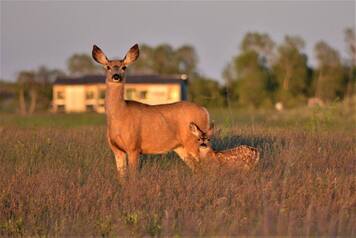 Mule deer doe with mule deer fawn
Mule deer doe with mule deer fawn
- In the wild, female hybrids are always subdominant to female mule deer, and are often chased away from feeding areas (Kay and Boe, 1992).
- It is believed that natural hybridization may occur more frequently in areas where the mule deer population is high, but the whitetail population is relatively low (Kay and Boe, 1992).
- In an area with both whitetail and mule deer habitat, wild hybrids selected exclusively for mule deer habitat in the winter, despite it offering little cover or protection from freezing winds (Kay and Boe, 1992).
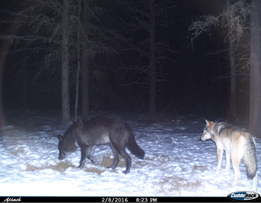 Unable to stot like a mule deer or run like a whitetail, when faced by predators like coyotes and wolves, hybrids may face higher predation risk than either pure species.
Unable to stot like a mule deer or run like a whitetail, when faced by predators like coyotes and wolves, hybrids may face higher predation risk than either pure species.
- Intermediate limb structure and mechanics prevents hybrids from either “galloping” or stotting like mule deer (as mentioned in point #5). As a result, they run slower than whitetails and, in the wild, may have poor predator avoidance abilities (Lingle, 1992). This may partially explain the low occurrence of hybrids in the wild.
- Studies have found hybrids that contain whitetail or mule deer mitochondrial DNA. Since mitochondrial DNA is passed down only from the mother, this indicates that hybridization can occur regardless of what species is the male or female in the pair (Bradley et al., 2003).
- While crosses can occur regardless of the species-parent combination, it has been suggested that the most common natural cross occurs between a whitetail buck and a mule deer doe. This is because mule deer does are generally less elusive during breeding than whitetail does and as a result, are more readily bred by whitetail bucks when an encounter takes place (Wishart, 1980).
- Although natural hybridization is generally relatively rare, it can be significantly higher (as high as 24%) in some populations (Bradley et al., 2003).
- Prior to the development of microbiology, the readiness with which whitetails and mule deer hybridize would have suggested that these two species were in fact only subspecies of the same species (Bradley et al., 2003). In fact, this study concludes that if whitetails and mule deer were domesticated livestock rather than game animals, they would likely be considered subspecies of a single species.
- Whitetails and mule deer are genetically very similar, differing by only 1.3%, possibly suggesting relatively recent speciation (separation of a single species into two different ones) (Bradley et al., 2003).
- Reports of male sterility in F1 crosses (offspring of a pure-bred mule deer with a pure-bred whitetail) on farms are not merely anecdotal. One study examined 10 female F1 progeny, and found that all 10 were fertile and produced fawns. However, when 2 F1 male progeny were examined (one produced by a mule deer sire X whitetail doe, and the other by a whitetail sire X mule deer doe), both were found to be sterile. The mule deer sire X whitetail dam cross produced no sperm at all, while the other cross (whitetail buck X mule deer doe) produced severely defective sperm. Conversely, a BC1 cross (3/4 whitetail) produced healthy sperm, and although it did not breed during the study, was deemed fertile based on sperm production. (Wishart et al., 1988).
From left to right they are: mule deer, mule deer, mule deer, whitetail, moose, whitetail, elk, whitetail (damaged), whitetail.
Bradley, Robert .D., F.C. Bryant, L.C. Bradley, M.L. Haynie, and R.J. Baker. 2003. “Implications of Hybridization Between White-Tailed Deer and Mule Deer.” The Southwestern Naturalist 48 (4): 654–60. doi:10.1894/0038-4909(2003)048<0654:IOHBWD>2.0.CO;2.
Derr, J N, D W Hale, D L Ellsworth, and J W Bickham. 1991. “Fertility in an F1 Male Hybrid of White-Tailed Deer (Odocoileus Virginianus)× Mule Deer (O. Hemionus).” Journal of Reproduction and Fertility 93 (1): 111–17. doi:10.2307/3504281.
Kay, Charles E. and Edward Boe. 1992. “Hybrids of White-Tailed and Mule Deer in Western Wyoming.” Great Basin Naturialist 52 (3): 290–92.
Lingle, Susan. 1993. “Escape Gaits of White-Tailed Deer, Mule Deer, and Their Hybrids: Body Configuration, Biomechanics, and Function.” Canadian Journal of Zoology 71 (4): 708–24. doi:10.1139/z93-095.
Wishart, W.D. 1980. “Hybrids of White-Tailed and Mule Deer in Alberta” Journal of Mammalogy 71 (4): 3–6. doi:10.1644/870.1.Key.
Wishart, W.D., Hrudka, F., Schmutz, S.M. & Flood, P.F. (1988) “Observations on spermatogenesis, sperm phenotype, and fertility in white-tailed mule deer hybrids and a yak cow hybrid”. Canadian Journal of Zoology 66, 1664-1671.

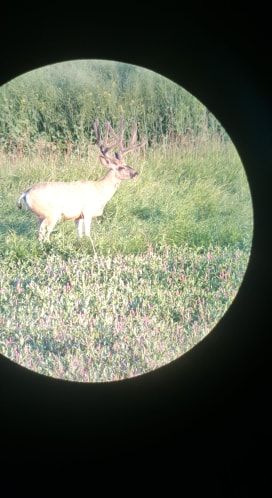
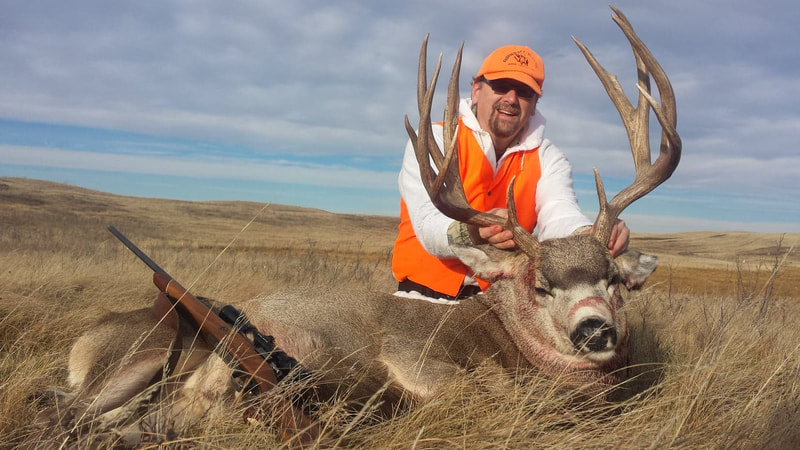
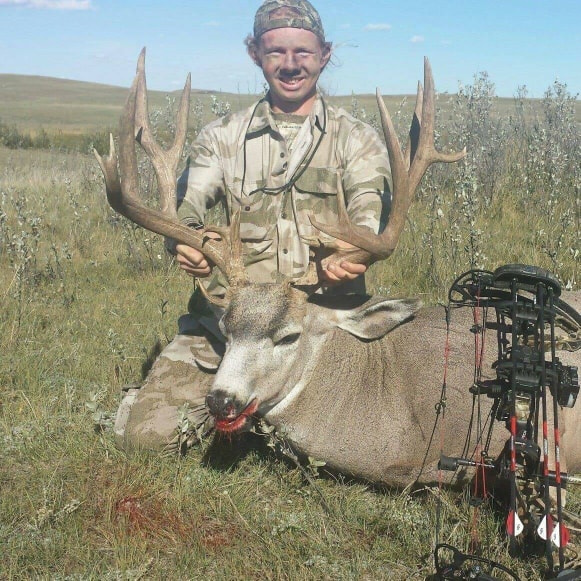
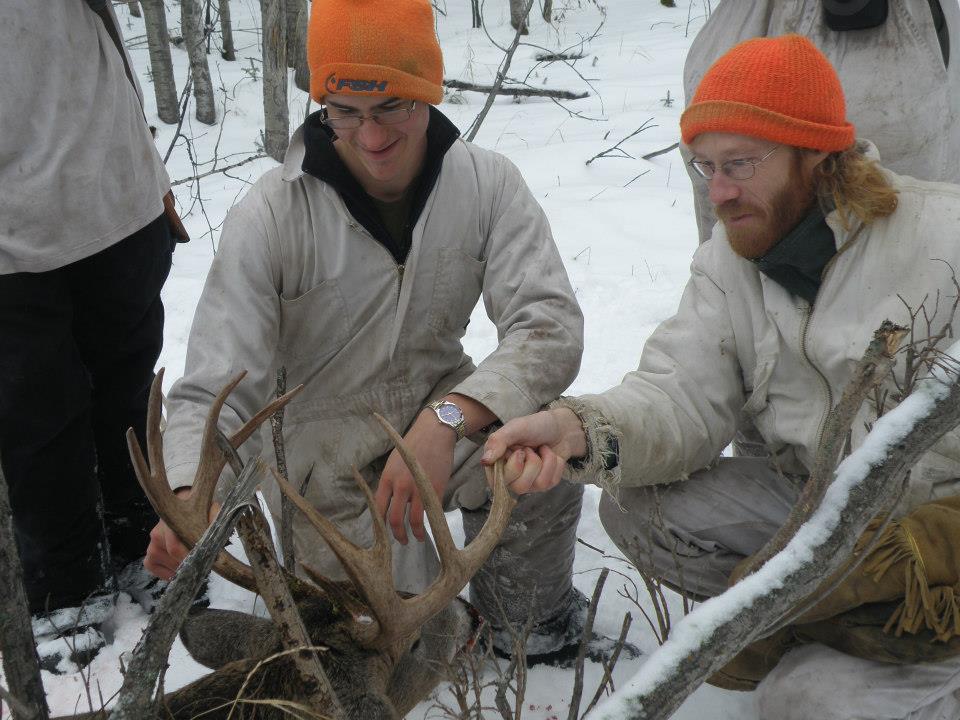
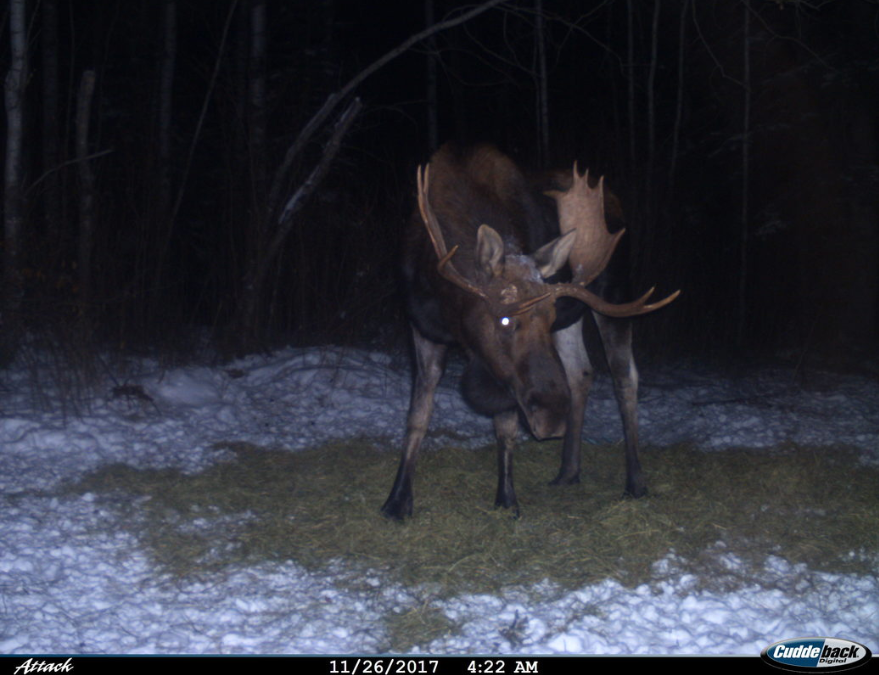
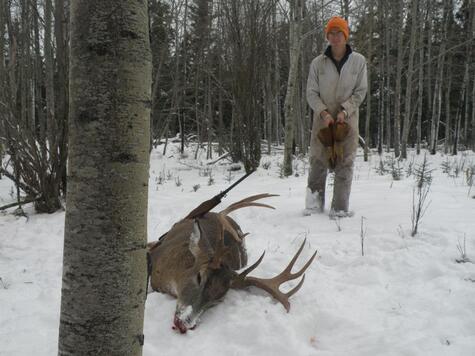
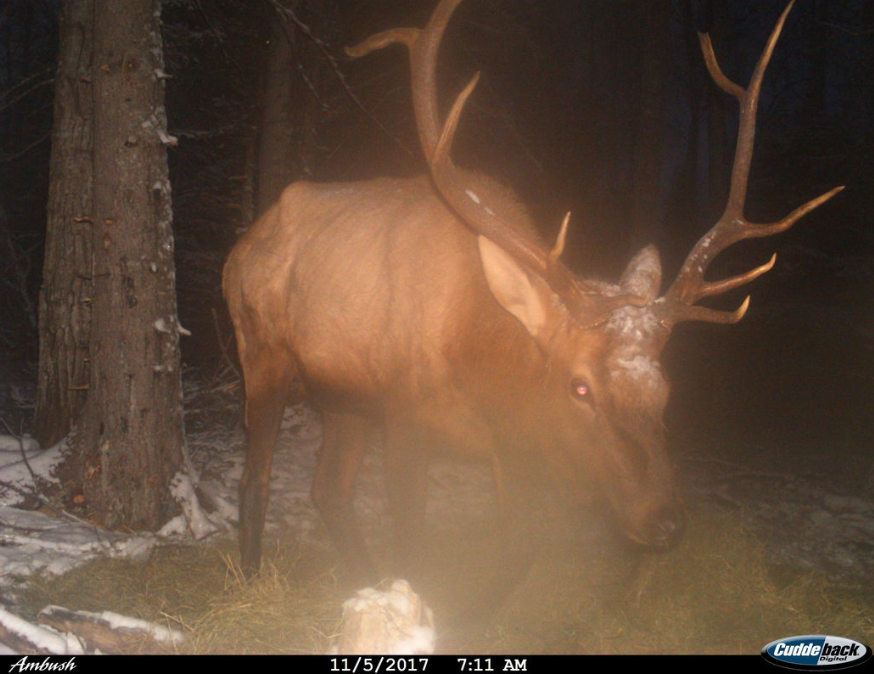
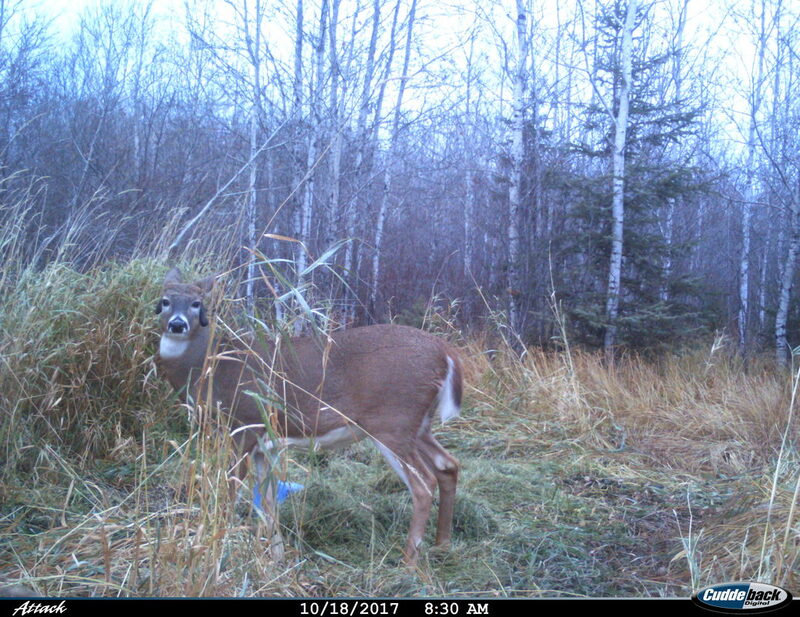
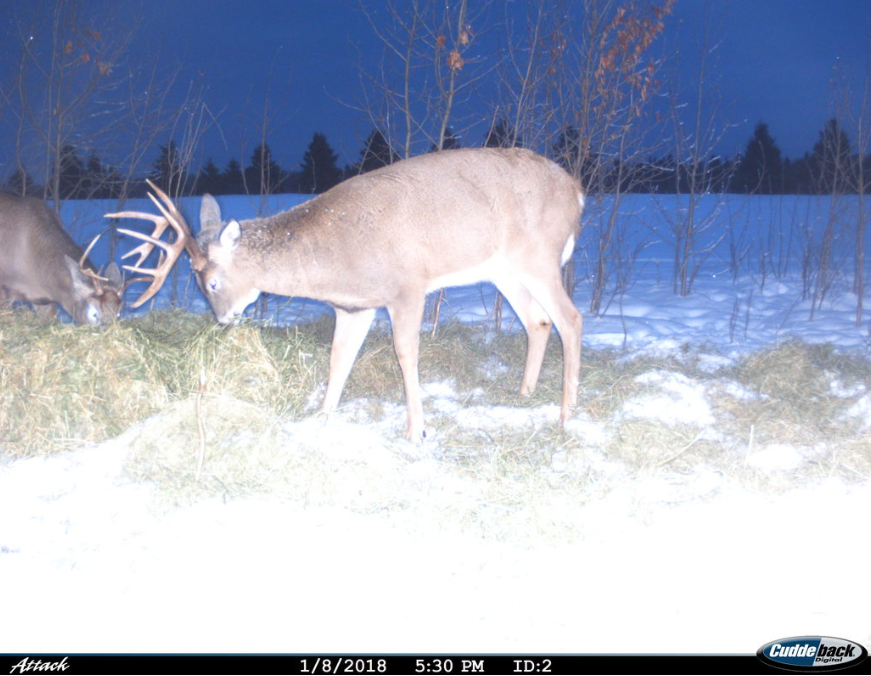
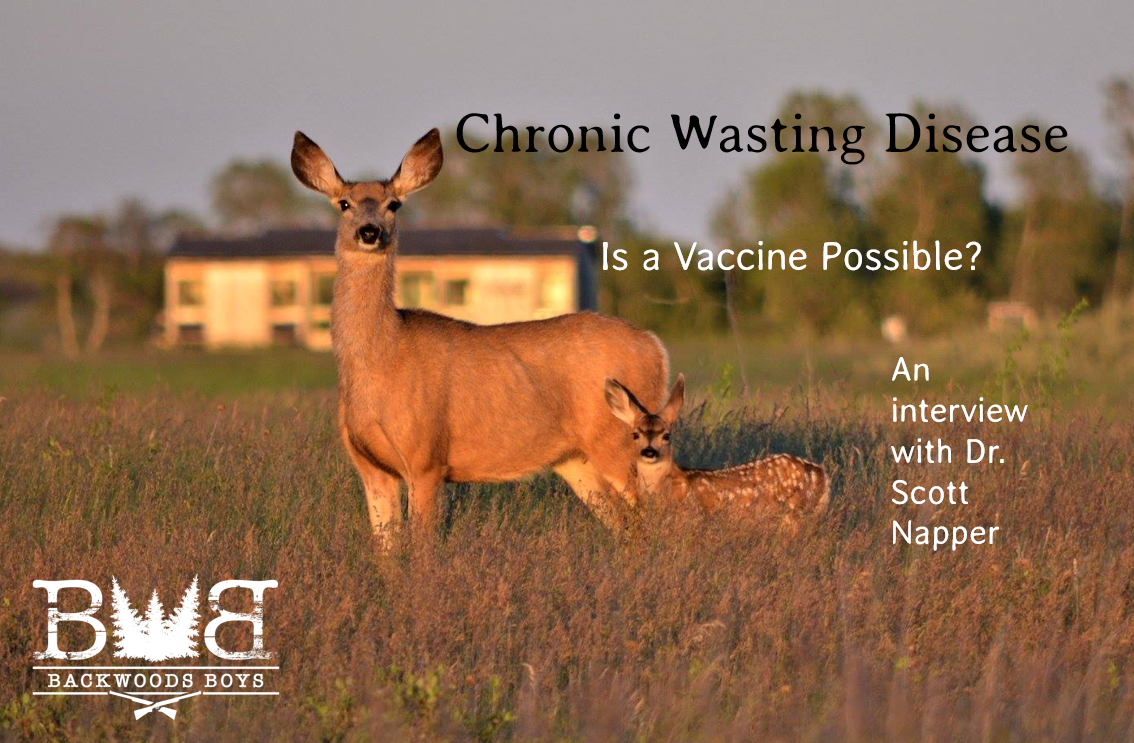




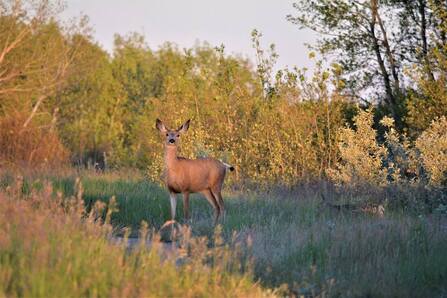
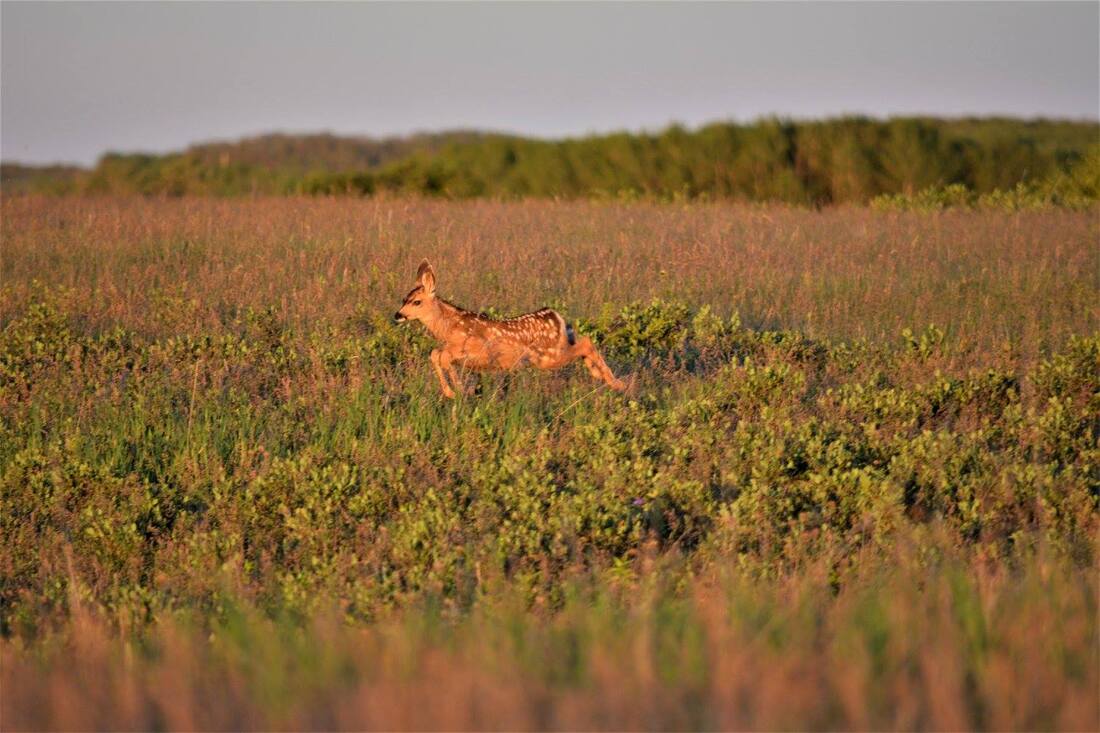
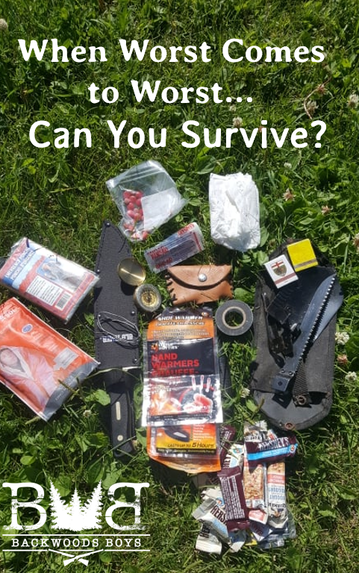
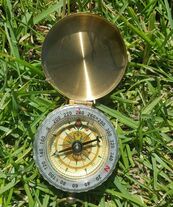
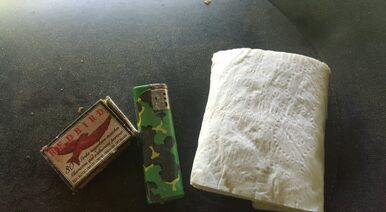
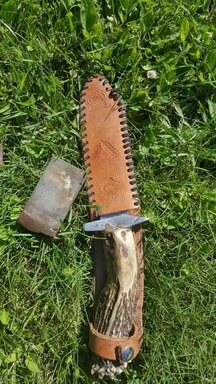
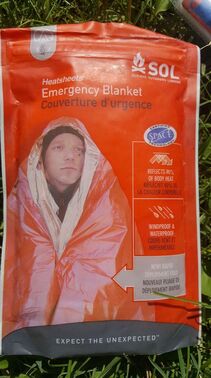

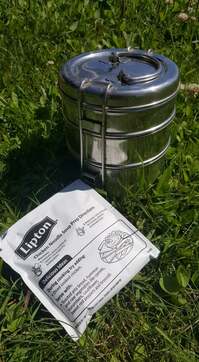
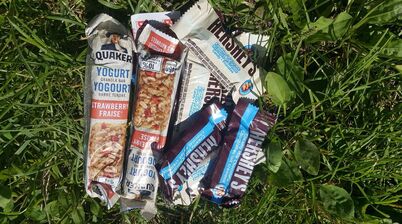
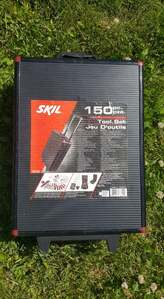
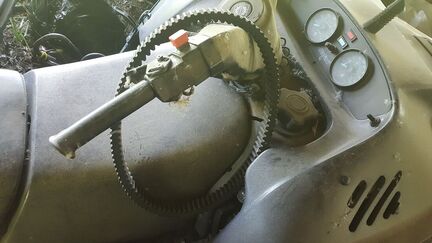
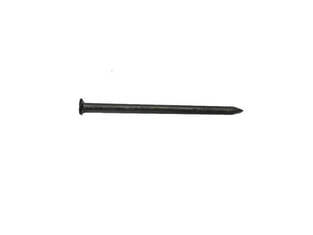
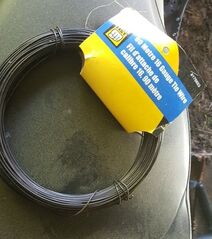
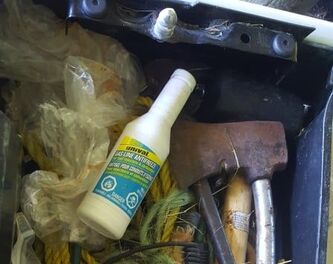
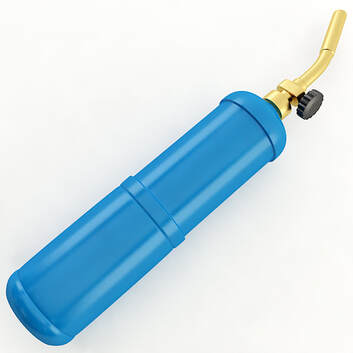
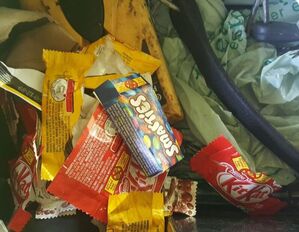
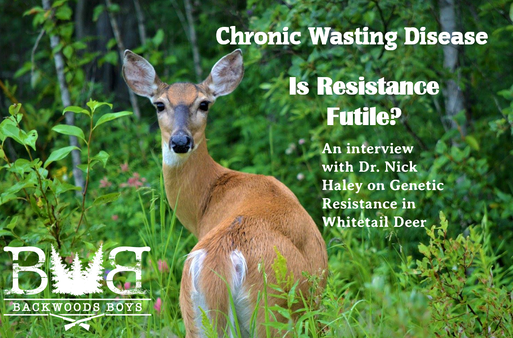
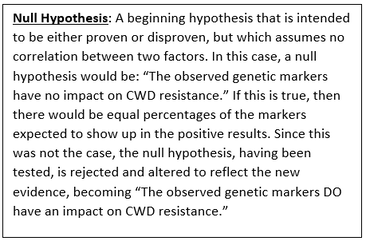
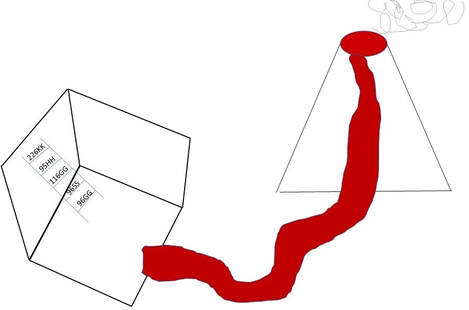
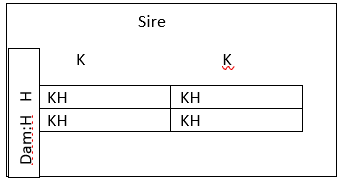
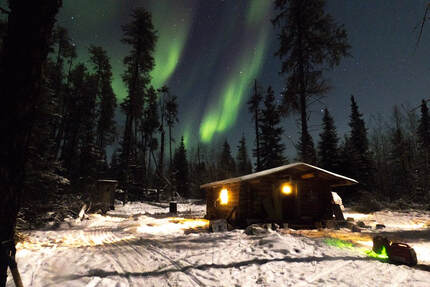
 RSS Feed
RSS Feed